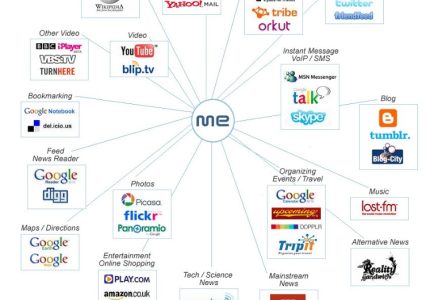Importance of Effective Website Design for Small Businesses
Effective website design is crucial for small businesses as it serves as the digital storefront that attracts and engages customers. A well-designed website not only enhances credibility but also improves user experience, making it easier for visitors to find information and take desired actions. In today’s competitive market, having an appealing and functional website can significantly influence a small business’s growth and success.
Enhancing Brand Credibility
Effective website design is crucial for small businesses as it serves as the digital storefront that can attract and engage potential customers. A well-designed website not only showcases products and services but also reflects the professionalism and credibility of the business. When visitors encounter a visually appealing and easy-to-navigate website, they are more likely to trust the brand and consider making a purchase or inquiry.
Enhancing brand credibility through thoughtful website design involves consistent branding elements, clear messaging, and user-friendly interfaces. Small businesses can establish a strong online presence by using quality visuals, concise content, and responsive layouts that function seamlessly across devices. This reinforces trust and demonstrates commitment to providing a positive customer experience, ultimately driving growth and long-term success.
Boosting Customer Engagement
Effective website design is crucial for small businesses as it directly influences customer engagement and overall success. A well-designed website creates a positive first impression, making visitors more likely to trust and explore the business further. Clear navigation and visually appealing layouts help users easily find information, enhancing their experience and encouraging them to take desired actions such as making a purchase or contacting the business. Additionally, an optimized website ensures fast loading times and mobile responsiveness, catering to a broader audience and increasing accessibility. Ultimately, investing in quality web design helps small businesses stand out in a competitive marketplace, foster customer loyalty, and drive growth through increased engagement.
Increasing Sales and Conversions
Effective website design is crucial for small businesses aiming to increase sales and conversions. A well-designed website creates a strong first impression, showcasing professionalism and trustworthiness to potential customers. Clear navigation and visually appealing layouts make it easier for visitors to find products or services, encouraging them to stay longer and engage more deeply. Additionally, responsive design ensures the website functions seamlessly across all devices, broadening the reach to mobile users. Incorporating compelling calls-to-action guides visitors towards desired outcomes, whether making a purchase, signing up for a newsletter, or contacting the business. Ultimately, a thoughtfully designed website not only attracts more visitors but also converts them into loyal customers, driving growth and success for small businesses.
Key Elements of Small Business Website Design
Creating an effective website for a small business involves several key elements that work together to attract visitors and turn them into customers. A well-designed website should be visually appealing, easy to navigate, and tailored to the target audience. Incorporating clear calls-to-action, mobile responsiveness, and relevant content are essential components that enhance user experience and support the growth of the business online.
Responsive and Mobile-Friendly Layouts
Effective small business website design focuses on creating a user-friendly experience that attracts and retains visitors, ultimately supporting business growth. Essential elements include clear navigation, engaging visual design, and concise content that communicates the brand’s value proposition. Incorporating high-quality images and a consistent color scheme helps establish a professional and memorable appearance.
Responsive and mobile-friendly layouts are crucial in today’s digital landscape, ensuring that websites function seamlessly across all devices and screen sizes. A responsive design adapts the layout automatically, providing optimal viewing experiences on desktops, tablets, and smartphones. This approach enhances user convenience, reduces bounce rates, and improves search engine rankings, making it a vital component of small business website success.
Clear Navigation Structure
Clear navigation structure is a crucial element of small business website design, ensuring visitors can easily find the information they need. A well-organized menu layout guides users logically through your site, highlighting key sections such as products, services, about us, and contact details. Consistent placement of navigation menus across all pages enhances user experience and reduces confusion. Incorporating intuitive labels and limiting the number of menu options helps visitors quickly locate desired content without feeling overwhelmed. Additionally, including search functionality can assist users in directly accessing specific information, further improving accessibility. Ultimately, a clear and straightforward navigation structure builds trust and encourages visitors to engage more deeply with your business.
Visually Appealing Aesthetics
Creating a small business website that is visually appealing is essential for attracting and retaining customers. A clean and professional design helps establish credibility and brand identity. Consistent use of colors, fonts, and imagery ensures coherence and enhances the overall aesthetic. High-quality visuals, including images and graphics, should complement the content without overwhelming the visitor. Utilizing ample white space improves readability and creates a balanced layout. Additionally, choosing a responsive design ensures the website looks great on all devices, providing a seamless user experience. Attention to these visual elements can significantly influence how visitors perceive a small business and encourage engagement.
Consistent Branding and Messaging
Consistent branding and messaging are essential components of effective small business website design. They help establish a recognizable identity that resonates with visitors and builds trust. By maintaining uniform colors, fonts, and logos throughout the website, a business can create a cohesive look that reinforces its brand image. Clear and focused messaging ensures visitors understand the company’s value proposition quickly and easily, guiding them toward desired actions such as making a purchase or contacting for more information. Integrating these elements thoughtfully enhances user experience and fosters brand loyalty, making the website a powerful tool for business growth.
Design Best Practices for Small Business Websites
Creating an effective website is essential for small businesses looking to establish a strong online presence. Applying best design practices ensures the website is visually appealing, user-friendly, and optimized for conversions. By focusing on clarity, simplicity, and functionality, small businesses can attract more visitors and turn them into loyal customers.
Simplified User Experience (UX)
Creating an effective small business website involves prioritizing a simplified user experience (UX) to ensure visitors can easily find what they need. Clear navigation menus, straightforward layout, and concise content help users quickly understand your offerings and take action. Choose a clean design with plenty of white space to reduce clutter and improve readability. Use consistent branding elements such as colors, fonts, and logos to build trust and recognition. Mobile responsiveness is crucial, so ensure your website functions seamlessly on all devices. Additionally, loading speed should be optimized to prevent visitors from leaving due to delays. Incorporating clear calls-to-action guides users toward desired outcomes, such as making a purchase or contacting your business. Overall, a user-centered approach that simplifies interactions enhances satisfaction and helps convert visitors into customers.
Fast Loading Speeds
Creating a small business website that is visually appealing and functional requires following certain design best practices, especially to ensure fast loading speeds. A quick-loading site enhances user experience, reduces bounce rates, and improves search engine rankings.
- Optimize images by compressing them without losing quality, and use appropriate formats like WebP for faster load times.
- Minimize the use of heavy scripts and leverage asynchronous loading for JavaScript files to prevent blocking page rendering.
- Implement a clean and simple design that avoids unnecessary elements, ensuring faster rendering and easier navigation.
- Use a reliable hosting provider that offers good bandwidth and server response times to improve website speed.
- Enable browser caching to store static resources locally on users’ devices, reducing load times on repeat visits.
- Limit the use of third-party plugins and scripts, as they can add additional load time.
- Utilize a Content Delivery Network (CDN) to distribute content across multiple locations, reducing latency.
- Regularly test the website speed using tools like Google PageSpeed Insights or GTmetrix and optimize based on their recommendations.
High-Quality Content and Visuals
Designing an effective website for a small business involves focusing on both aesthetics and functionality to attract and retain customers. High-quality content and visuals play a crucial role in establishing credibility and engaging visitors, making it essential to implement best practices that resonate with your target audience.

- Prioritize a clean, user-friendly layout that makes navigation intuitive and straightforward.
- Use high-resolution images and professionally designed graphics to create a polished look and enhance visual appeal.
- Develop clear, concise, and compelling content that communicates your value proposition and services effectively.
- Incorporate consistent branding elements such as logo, color scheme, and fonts to reinforce brand identity.
- Optimize images and content for fast loading times to improve user experience and search engine rankings.
- Ensure your website is mobile-responsive to provide a seamless experience across all devices.
- Include calls to action that guide visitors toward desired actions, like contacting you or making purchases.
- Regularly update your content with blog posts, news, or offers to keep your site fresh and relevant.
- Maintain high-quality visuals by avoiding stock images that appear generic and instead using custom or unique visuals that reflect your business identity.
Call-to-Action (CTA) Optimization
Effective call-to-action (CTA) optimization is crucial for small business websites to drive user engagement and achieve business goals. Clear, concise, and visually prominent CTAs guide visitors toward desired actions such as making a purchase, signing up for a newsletter, or contacting the business. Using compelling language that creates a sense of urgency or offers value encourages users to act promptly. Placement of CTAs should be strategic, ideally above the fold and repeated at natural pause points on the page to maximize conversions. Additionally, designing CTAs with contrasting colors and ample whitespace ensures they stand out from other content, capturing visitors’ attention effortlessly. A/B testing different CTA styles, wording, and placement can provide insight into what resonates best with your audience, enabling continuous improvement in conversion rates. By focusing on simplicity and clarity, small businesses can significantly enhance user experience and achieve their digital objectives effectively.
Choosing the Right Website Design Tools and Platforms
Selecting the appropriate website design tools and platforms is crucial for small businesses aiming to establish a strong online presence. The right tools can simplify the design process, save time, and ensure a professional appearance that attracts and retains customers. Understanding the options available and how they align with your business goals is essential for creating an effective and user-friendly website.
Website Builders (e.g., Wix, Squarespace)
Choosing the right website design tools and platforms is essential for small businesses aiming to establish a strong online presence. The right platform can simplify the design process, reduce costs, and ensure your website appeals to your target audience.
- Ease of Use: Select platforms like Wix or Squarespace that offer drag-and-drop builders, making it easy to create professional-looking websites without extensive technical knowledge.
- Design Flexibility: Look for platforms that provide a variety of customizable templates tailored to your industry, ensuring your website reflects your brand identity.
- Cost-Effectiveness: Consider affordable pricing plans that include essential features such as domain registration, hosting, and security to maximize your budget.
- Scalability: Choose tools that allow for easy website growth and feature additions as your business expands.
- Customer Support: Opt for platforms with reliable customer service to assist with technical issues or customization questions.
- SEO and Marketing Tools: Ensure the platform offers built-in SEO features and integrations with marketing tools to help attract more visitors and convert them into customers.
By carefully evaluating these aspects, small businesses can select the most suitable website builder that aligns with their goals and resources, leading to a successful online presence.
Content Management Systems (CMS) like WordPress
Choosing the right website design tools and platforms is crucial for small businesses aiming to establish a professional online presence. Content Management Systems (CMS) like WordPress are popular choices because they offer user-friendly interfaces, customizable themes, and a vast array of plugins to enhance functionality. WordPress allows small business owners to manage their website content efficiently without extensive technical expertise, making it accessible for beginners and scalable as the business grows. Additionally, other platforms such as Wix or Squarespace provide drag-and-drop builders that simplify the design process, ideal for small enterprises seeking quick and visually appealing solutions. When selecting a platform, consider factors like ease of use, flexibility, support options, and budget to ensure it aligns with your business goals and technical resources. Ultimately, choosing the right tools helps create a compelling, functional, and manageable website that attracts and retains customers.
Custom Development Considerations
Choosing the right website design tools and platforms is crucial for small businesses aiming to establish a strong online presence. It’s important to evaluate options based on ease of use, customization capabilities, scalability, and cost. Popular website builders like WordPress, Shopify, and Wix offer user-friendly interfaces and a variety of templates suitable for small businesses. Custom development allows for tailored features but requires careful consideration of budget, timeline, and technical expertise. Small business owners should weigh the benefits of ready-made solutions against the flexibility of custom development to ensure their website meets specific needs and growth plans.
SEO and Accessibility in Website Design
Creating an effective website for small businesses involves more than just appealing visuals and functionality; it also requires attention to SEO and accessibility. SEO helps ensure that potential customers can find the website easily through search engines, increasing visibility and driving traffic. Accessibility ensures that all users, including those with disabilities, can navigate and utilize the website effectively. Combining these two aspects in website design not only broadens reach but also demonstrates a commitment to inclusivity and user experience.
Optimizing for Search Engines
When designing websites for small businesses, it is essential to prioritize both SEO and accessibility to reach a wider audience and improve user experience. Optimizing for search engines involves implementing strategies that make your website easily discoverable, while accessibility ensures that all users, regardless of disabilities, can navigate and interact with your site effectively.
- Use clear and descriptive titles and headings to help search engines understand your content and improve ranking.
- Incorporate relevant keywords naturally within your content, meta descriptions, and headings to increase visibility in search results.
- Ensure your website is mobile-friendly and has fast load times, as these are significant ranking factors and improve user engagement.
- Implement semantic HTML tags to create a logical structure that assists screen readers and search engines in interpreting your content.
- Provide alternative text for images, so visually impaired users can understand visual content, and search engines can index images effectively.
- Maintain a consistent and easy-to-navigate layout to enhance usability for all visitors.
- Use accessible color contrasts and font sizes to accommodate users with visual impairments.
- Enable keyboard navigation to make your website usable without a mouse, supporting users with mobility disabilities.
- Regularly update your content and ensure all links and elements are functional to maintain good SEO health and accessibility standards.
Ensuring Accessibility for All Users
In small business website design, prioritizing SEO and accessibility is essential to reach a wider audience and provide an inclusive experience for all users. Clear navigation, descriptive headings, and optimized content help improve search engine rankings while making it easier for users to find valuable information. Ensuring accessibility involves using sufficient color contrast, readable fonts, and straightforward language, which benefits not only users with disabilities but all visitors. Incorporating accessible features such as keyboard navigation and alt text for images enhances usability and demonstrates a commitment to inclusivity. Overall, balancing SEO strategies with accessibility practices creates a user-friendly website that can grow with the business and serve diverse audiences effectively.
Implementing Schema Markup and SEO Best Practices
Effective website design for small businesses should prioritize both SEO and accessibility to reach a wider audience and provide an inclusive user experience. Incorporating SEO best practices involves optimizing content with relevant keywords, creating clear site structures, and ensuring fast load times, which help improve search engine rankings. Accessibility considerations include designing with features such as proper color contrast, readable fonts, and keyboard navigability to ensure users with disabilities can access and enjoy the website. Implementing schema markup further enhances SEO by providing search engines with detailed context about the website’s content, such as reviews, products, or local business information. Overall, small business websites that balance SEO strategies with accessibility features not only increase visibility but also foster trust and engagement with a diverse range of visitors, ultimately driving growth and success in the digital landscape.
Maintenance and Updating of Small Business Websites
Maintaining and updating a small business website is essential for ensuring it remains functional, secure, and relevant to customers. Regular maintenance helps prevent technical issues, enhances user experience, and keeps content fresh. Staying up-to-date with the latest design trends and technology also ensures the website continues to effectively represent the brand and support business growth.
Regular Content Updates
Maintenance and updating of small business websites are essential components of effective website design that ensure continued functionality, relevance, and user engagement. Regular maintenance involves checking for broken links, updating software, and monitoring website performance to prevent security breaches and technical issues. Consistently refreshing content keeps the site current and appealing to visitors, encouraging repeat visits and higher search engine rankings. Implementing a scheduled plan for updates, such as blog posts, product listings, and company news, helps small businesses stay competitive in their industry. Overall, a well-maintained website not only enhances user experience but also builds trust and credibility with customers.
Security and Backup Protocols
Maintaining and updating a small business website is essential for ensuring optimal performance, security, and relevance. Regularly refreshing content, checking for broken links, and updating design elements help keep the site engaging for visitors and improve search engine rankings. Implementing a consistent schedule for updates can prevent the site from becoming outdated or vulnerable to security threats.
Security protocols are critical in protecting the website from cyber threats and unauthorized access. Small businesses should utilize SSL certificates to encrypt data, implement strong password policies, and enable two-factor authentication when possible. Keeping all software, plugins, and themes up to date reduces vulnerabilities that hackers often exploit.
Backup protocols are a vital aspect of website maintenance, ensuring that data can be restored quickly in case of data loss, hacking, or system failure. Regular automated backups should be scheduled and stored securely off-site or in the cloud. Testing these backups periodically ensures they are functional and reliable, providing peace of mind and continuity for the business.
Performance Monitoring and Optimization
Effective maintenance and updating of small business websites are essential for ensuring ongoing functionality, security, and relevance in today’s digital landscape. Regular updates help keep content fresh, improve user experience, and address any vulnerabilities that could be exploited by hackers.
Performance monitoring and optimization are crucial for providing visitors with a seamless browsing experience, which can directly impact customer engagement and conversion rates. Small businesses should adopt a proactive approach to identify issues early and implement strategies that enhance website speed and responsiveness.
- Regular Content Updates: Keep website information accurate and current to engage visitors and improve search engine rankings.
- Software and Plugin Updates: Ensure all website platforms, plugins, and frameworks are up to date to maintain security and compatibility.
- Security Checks: Perform routine security scans and implement backups to protect against data loss and malicious attacks.
- Performance Monitoring: Use analytics and diagnostics tools to track website metrics such as load times, bounce rates, and user behavior.
- Speed Optimization: Compress images, leverage browser caching, and minimize code to improve loading times.
- Mobile Responsiveness: Regularly test and optimize the website for various devices and screen sizes.
- Server Management: Monitor server performance and uptime to ensure consistent availability of the website.





